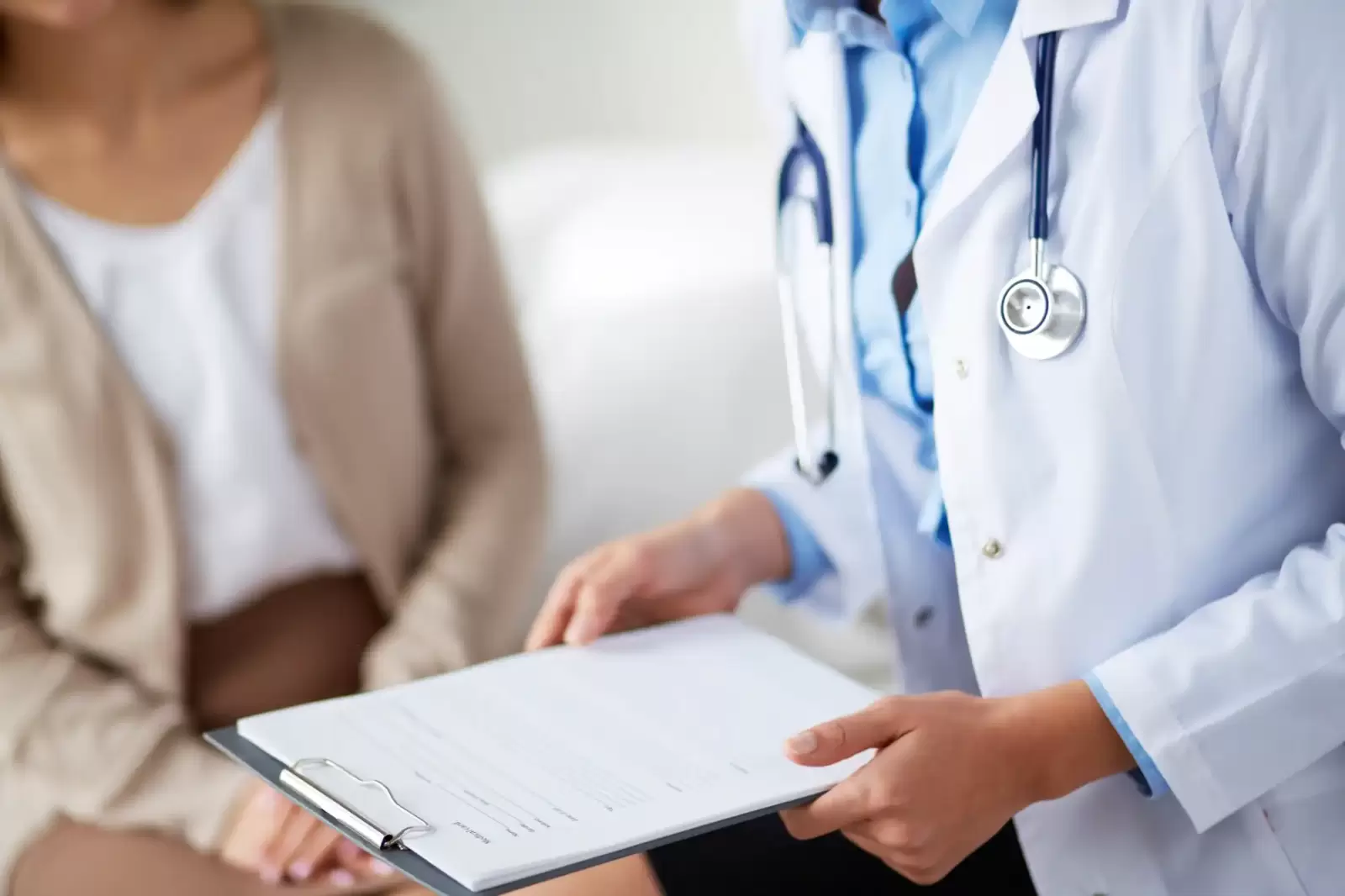News
Breast Cancer Screenings
October is Breast Cancer Awareness month.

By Radhiya K. Lewis, DNP, APRN, FNP-BC
2 min read
Breast cancer is the most common type of cancer in the world. It accounts for 30 percent, or 1 in 3, of all new female cancers each year. It is the second leading cause of cancer death in women. The average risk of a woman in the U.S. developing breast cancer sometime in her lifetime is about 13 percent or a 1 in 8 chance.
It is recommended that all women, and even men, do self-breast checks routinely. According to breastcancer.org, there are five steps in completing a self-exam.
Step 1: Examine Your Breasts in a Mirror With Hands on Hips
Begin by looking at your breasts in the mirror with your shoulders straight and your arms on your hips.
Here’s what you should look for:
Now, raise your arms and look for the same changes.
Step 3: Look for Signs of Breast Fluid
While you’re at the mirror, look for any signs of fluid coming out of one or both nipples (this could be a watery, milky, or yellow fluid or blood).
Step 4: Feel for Breast Lumps While Lying Down
Next, check for breast lumps or abnormalities by feeling your breasts while lying down, using your right hand to feel your left breast, and then your left hand to feel your right breast. Use a firm, smooth touch with the first few finger pads of your hand, keeping the fingers flat and together.
Press down with your fingers and move them in a circular motion that’s about the size of a quarter (or an inch around). Cover the entire breast from top to bottom, side to side — from your collarbone to the top of your abdomen, and from your armpit to your cleavage. Repeat with the opposite breast.
Step 5: Feel Your Breasts for Lumps
While Standing or Sitting Finally, feel your breasts while you are standing or sitting. Many women find that the easiest way to feel their breasts is when their skin is wet and slippery, so they like to do this step in the shower. Cover your entire breast, using the same hand movements described in step 4.
While lumps are common, it is reccomended to followup with your provider.
We should all be comfortable in checking our breast and knowing the signs and symptoms of breast abnormalities. Let’s take control of our health by committing to screenings. Start today by talking to your health care provider about this recommendation. Talk to your family, friends, coworkers and church members about maintaining their health and being aware of breast health today. We need to do better! We can do better!
It is recommended that all women, and even men, do self-breast checks routinely. According to breastcancer.org, there are five steps in completing a self-exam.
Step 1: Examine Your Breasts in a Mirror With Hands on Hips
Begin by looking at your breasts in the mirror with your shoulders straight and your arms on your hips.
Here’s what you should look for:
- Breasts that are their usual size, shape, and color
- Breasts that are evenly shaped without visible distortion or swelling
- Dimpling, puckering, or bulging of the skin
- A nipple that has changed position or an inverted nipple (pushed inward instead of sticking out)
- Redness, soreness, rash, or swelling
Now, raise your arms and look for the same changes.
Step 3: Look for Signs of Breast Fluid
While you’re at the mirror, look for any signs of fluid coming out of one or both nipples (this could be a watery, milky, or yellow fluid or blood).
Step 4: Feel for Breast Lumps While Lying Down
Next, check for breast lumps or abnormalities by feeling your breasts while lying down, using your right hand to feel your left breast, and then your left hand to feel your right breast. Use a firm, smooth touch with the first few finger pads of your hand, keeping the fingers flat and together.
Press down with your fingers and move them in a circular motion that’s about the size of a quarter (or an inch around). Cover the entire breast from top to bottom, side to side — from your collarbone to the top of your abdomen, and from your armpit to your cleavage. Repeat with the opposite breast.
Step 5: Feel Your Breasts for Lumps
While Standing or Sitting Finally, feel your breasts while you are standing or sitting. Many women find that the easiest way to feel their breasts is when their skin is wet and slippery, so they like to do this step in the shower. Cover your entire breast, using the same hand movements described in step 4.
While lumps are common, it is reccomended to followup with your provider.
We should all be comfortable in checking our breast and knowing the signs and symptoms of breast abnormalities. Let’s take control of our health by committing to screenings. Start today by talking to your health care provider about this recommendation. Talk to your family, friends, coworkers and church members about maintaining their health and being aware of breast health today. We need to do better! We can do better!

